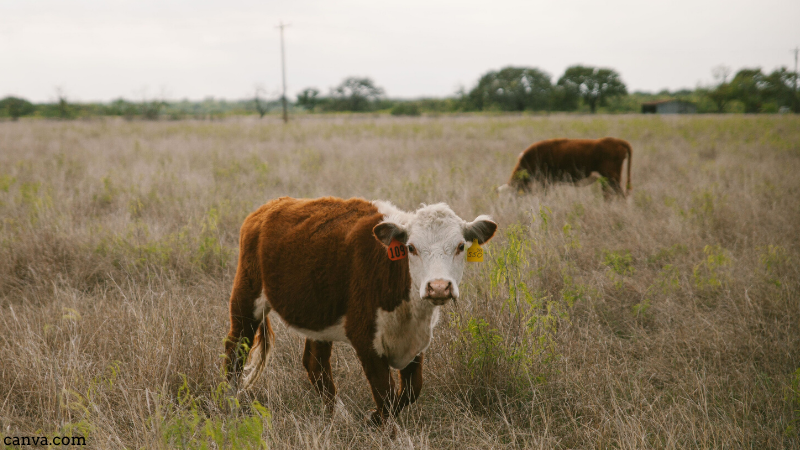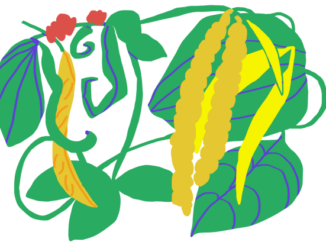The schemes for the climate and environment, or eco-schemes, are at the centre of the CAP reform post 2020. So far, negotiations have mainly evolved around ‘mandatory vs voluntary’ ringfencing, with some Member States advancing some proposals to break the binary discussion. However, there are uncertainties regarding the actual content and design of eco-schemes have remained.
On Friday 09 October 2020, the Commission finally put forward four flagship eco-schemes for the CAP Strategic Plans Regulation. The proposal was advanced by Mr Michael NIEJAHR (DG AGRI, Deputy Director-General in charge of Directorates G, H, I Units), and discussed Friday in the European Parliament.
The proposal was announced already in May 2020 along with the publication of the Farm to Fork strategy, and specifically in the Working Document on the analysis of the links between CAP reform and Green Deal
“There have also been calls for greater clarity regarding the scope of eco-schemes. The Commission could therefore provide additional indications concerning agricultural practices, which are particularly suited to addressing the challenges highlighted in the Green Deal – e.g. in relation to pesticide use reduction, nutrient management or support for organic farming – and which could be supported by eco-schemes.” Pag. 18 of the Commission Working document.
The four flagship for eco-schemes include the following practices
| Flagship eco-schemes | Possible practices for an eco-scheme |
| Agroforestry | • List of the region(s) concerned (depending on the needs)
• Minimum density of trees (x1 trees per ha for certain crops, x2 trees per ha for pastures) • Management rules for the trees to maximise the benefit for biodiversity, e.g. no cutting during nesting period (to be defined region per region), no use of fertilizers and pesticides • Etc. |
| Agroecology | • Organic farming: the farmers receives the payment under the single main condition that his farm complies with commitments laid down in Council Regulation (EC) No 834/2007.
• Sustainable land management practices: farmers that follow some land management practices going beyond conditionality or as defined in the organic regulation. These practices could include the rotation of crops, soil fertilisation with low release nitrogen source, use of natural substances as plant protection production with a focus on plant health by prevention or no use of chemical fertilizers. • Enhanced crop rotation, with the main condition that above the requirement of GAEC 8 on crop rotation the farmer includes additional crops, including on at least X % of the agricultural area nitrogen fixing crops. • Landscape features, higher share of permanently devoted areas to landscape features and additional types of elements to be retained, beyond GAEC 9. • Land lying fallow with enhanced species composition dedicated for pollination, farmland birds or other target species. • Support for low to moderate grazing level in target areas. • Implementation of flower strips, margins strips and high diversity grassland strips dedicated to biodiversity |
| Precision farming | • Nutrients management plans, where:
o with the support of farm advisory services, the farmer establishes a nutrients plan covering the whole farm o the farmer applies the plan during the year and reports in real time (possibly to a central Member State data repository) o any significant deviation to the plan triggers a contact with the advisory services to correct the situation |
| Carbon farming | • Result based system for CO2 equivalent removed or for emission avoided
• Computation of costs/income lost through proxies of removed/avoided CO2 (e.g. level of implementation of good practices) • Monitoring, reporting and verification (essential for data collection and calculation of GHG reduction) possible rewarding from the carbon market, conditional on high quality MRV and benchmarking |
Do these flagships bring more clarity?
This Commission’s initiative to clarify details and convince the most resistant parties is laudable. In our view, it anticipates and raises several issues around eco-schemes:
– Uptake of one or more practice under eco-schemes
Farmers might apply for and implement either one or more of the listed practices. Will there be any provisions to distinguish these situations when it comes to payment?
– Offer or uptake of practices under one single flagship
As established in the Commission proposal, Member States shall establish a list of ‘agricultural practices’ beneficial for the climate and environment. This list might be concentrated under one of flagships, as for instance those showed as example by the Commission. How is the Commission going to ensure that the Member States offer and stimulate the uptake of a wide range of practices under eco-schemes?
Rational for including precision farming under eco-schemes
Art 28 point 6 of the Commission proposal establishes that eco-schemes shall be granted either as payments (a) additional to the basic income support or (b) compensating farmers for their additional costs incurred and income foregone.
Precision farming is widely supported across the board and there are no doubts that this proposal will be appealing also to the most resistant Member States to eco-schemes. Precision farming can find large consensus because of its (often commercial) assumptions or claims to reduce costs, be good for the environment, and increase farmers’ incomes.
In this context, if it is really true that farmers save time, reduce costs, and have higher incomes, then Point 6(b) on costs incurred and income forgone cannot represent a valid basis for the support to precision farming.
Furthermore, if point 6(a) additional income support is the main rational to include precision farming in eco-schemes, the Commission, the MEPs, and the Member States shall be aware that precision farming cannot be equally adopted across different types of farming systems and may favour further concentration and inequalities in the agricultural sector.
Additional safeguards and provisions are needed to avoid this, as well as to ensure that public policies steer precision farming towards reduction of inputs, better management of natural resources, but also challenges the current unstainable system in agriculture and food markets, rather than exacerbating it.
A real concern here is that, as history shows, when presented with the easiest but least green option, member states often choose this over and above all other more genuinely green options. If the language is left as “at least one of the following” as it is in the Jahr text (Art28a p(2)), all eco-scheme money could be spend on this one tool. (and this is important- precision farming is just a set of tools not an aim for changed, more ecological farming).
Precision farming would represent this least green option of those available, one that would no doubt be presented as a win-win for both the environment and farming, despite the fact that it would primarily just maintain typical production methods but with newer equipment.
There are other arguments to carefully consider before including precision farming under eco-schemes.
More considerations -organic farming, carbon farming, no till, IPM
Clarity will be needed in defining what organic farming is in this context. The full and comprehensive organic certification scheme is a specific thing, funded under Pillar 2, or the European Agricultural Fund for Rural Development (EAFRD). Eco-schemes are part of Pillar 1, the European Agricultural Guarantee Fund (EAGF). The organic farming scheme involves a five year contract and a two year conversion, whereas eco-schemes will be funded annually.
However, if organic farming under eco-schemes are primarily about preparing farmers for going into the full scheme, by introducing the techniques and practices of organic farming, eco-schemes could be a useful stepping stone into the full organic scheme, as funded under EAFRD. Anything else could confuse consumers and potentially undermine trust in the organic certification scheme itself.
Carbon farming is also worth unpacking in more detail. While it is certainly a promising area, there is not yet a solid, comprehensive body of scientific, peer reviewed evidence, that helps us understand how carbon moves in agricultural systems. It was not for nothing that the UNFCCC steered well clear of accounting for Carbon and GHGs flows in agricultural soils – much depends on moisture, decomposition, temperature; under certain conditions sinks can become emitters, while soils are also just a temporary sink of carbon: we don’t fully know how it behaves, and how long it stays there yet. It would be concerning if money was paid out for practices/actions that might increase the store of carbon in the soil without verifiable measuring of same.
Similarly, there are concerns over conservation or no till agriculture being included in an eco-scheme. Minimal till without herbicide is possible under agroecological systems, whereas typically glyphosate is intrinsic to conventional conservation agriculture. For an eco-scheme, min till without herbicide is preferable.
On the other hand integrated pest management (IPM) could be listed as an eco-scheme – if we follow the 8 principles of IPM as outlined in the annex III to the Sustainable use of pesticides directive 2009/128, these include alternatives to pesticides and biological control, and would also help us reduce pesticide use, as farm to fork and biodiversity strategies call for.
Finally, avoiding double or even multiple payments will become very complicated with this huge suite of options – how will CAP avoid paying farmers multiple times for the same practice?
An indicative list for the eco-schemes
Considering the concerns above, what should eco-schemes include? Below is an indicative list.
— livestock reduction, extensification premium
— crop rotation 4 years or more with legumes
— grass lays on arable with clover (as part of leguminous strategy)
— paludiculture
— agroforestry
— specific IPM obligation ( 8 principles of IPM, annex III of SUPD)
— agroecological techniques as per this IFOAM EU Paper on Eco-Schemes
— mixed farming
— undersowing, multi-cropping
— define that only “conservation agriculture/no till” without pesticides will be supported
Final thoughts
These flagships have been presented and discussed in the Parliament and will certainly be influential in the final rounds of the CAP reform. In this proposal, the Commission has stressed that eco-schemes shall be established by the Member States in their CAP plan and be approved by the Commission. The publication of these flagships, aimed as it is at giving examples of what the Commission expects from the Member States when they design their eco-schemes, do not restrict the possible scope of an eco-scheme.
In this final rush towards the trilogues and approval of the Commission proposal, will there be enough time to include and reflect upon this proposal before it is too late?
Commission proposal: 201007 Eco-schemes 4 flagships





